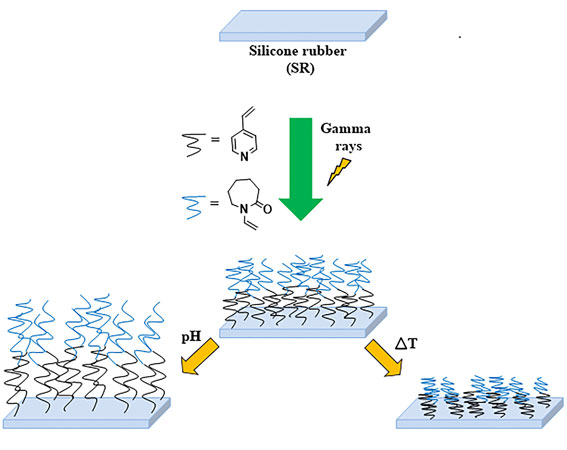Article contents
Synthesis of a thermo- and pH-sensitive comb-type graft copolymer by ionizing radiation
Published online by Cambridge University Press: 17 August 2018
Abstract

A thermo-pH sensitive graft copolymer was successfully obtained by grafting 4-vinylpyridine and N-vinylcaprolactam onto silicone rubber ((SR-g-4VP)-g-NVCL)) in two-step using ionizing radiation as an initiator. Factors such as dose and monomer concentration remarkably affected the grafting yield. Surface grafted films were well characterized by means of infrared-attenuated total reflection, carbon-13 nuclear magnetic resonance, thermogravimetric analysis, and mechanical properties were also studied. Scanning electron microscopy demonstrated that the grafting was superficial; mechanical studies demonstrated that grafting caused loss elongation of SR films. The grafted films showed a critical pH close to physiological pH and a critical temperature (lower critical solution temperature) about 35 °C, therefore, this material presents potential biomedical applications as drug delivery.
- Type
- Research Letters
- Information
- Copyright
- Copyright © Materials Research Society 2018
References
- 5
- Cited by





